Science Results Archive
| Spotlight | Image |
|---|---|
|
New Book Details Kuiper Flying Observatory's History
The book “NASA’s Kuiper Airborne Observatory, 1971-1995: An Operations Retrospective With a View to SOFIA,” chronicles the history of NASA’s airborne astronomy program. Authors Edwin F. Erickson (Astrophysics Branch, research scientist, now retired), and SOFIA Associate Scientist Allan W. Meyer focus on the Kuiper Airborne Observatory (KAO), but also feature the Ames-based airborne laboratories and observatories that preceded it: the Convair 990, the Learjet Observatory, and the U-2 research aircraft. |
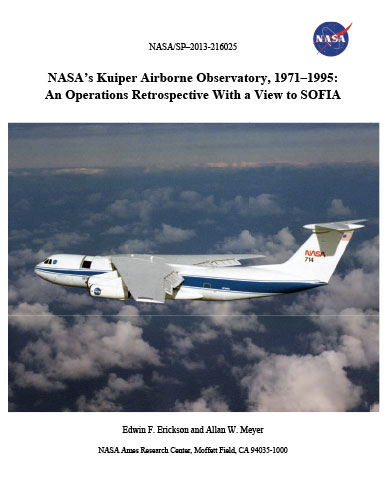
|
|
Capabilities of SOFIA's Science Instruments
SOFIA's instruments cover a wide range of wavelengths, from the near-ultraviolet to the far-infrared, as well as a wide range of spectral resolutions, from the broadband filters in the three infrared cameras to the very high resolution of the GREAT (German Receiver for Astronomy at Terahertz Frequencies) far-infrared heterodyne spectrometer. Capability "footprints" of SOFIA's planned suite of seven first-generation science instruments are shown in the graphic above. |
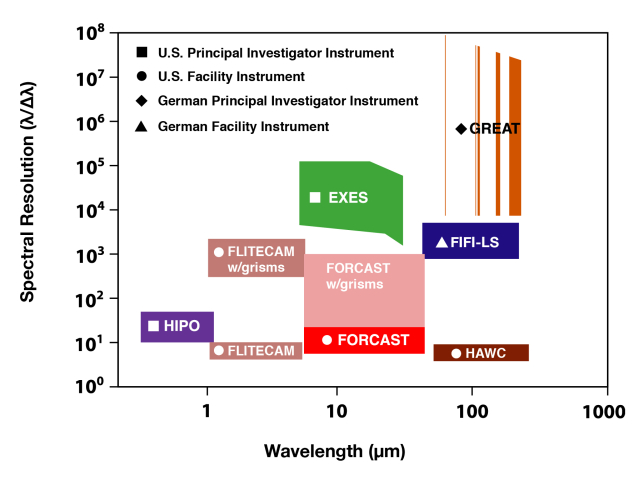
|
|
Cycle 2 AAA SOFIA Flights
The Cycle 2 cohort of Airborne Astronomy Ambassador (AAA) educators flew as partners with scientific investigators on SOFIA flights during March, April, and May 2014. AAA teams are competitively selected based on their plans for STEM education enhancements plus NASA- and SOFIA-oriented public engagement activities in their respective home communities. Click on the movie below to view the entire playlist of six videos of the Cycle 2 Ambassadors and their flights, produced by NASA Armstrong Flight Research Center's video team and the SOFIA Outreach group. |
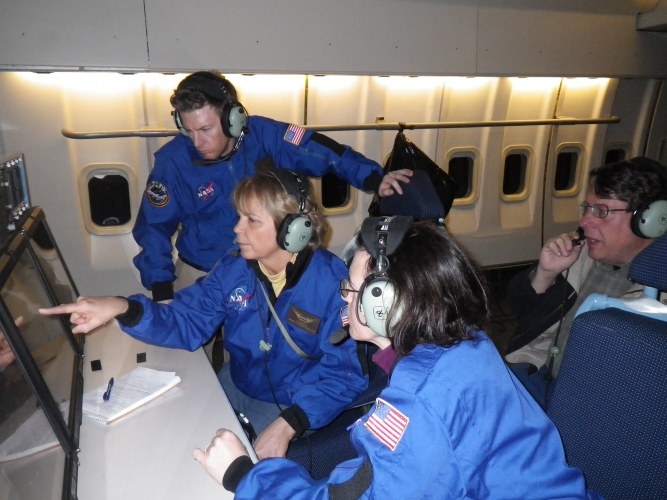
|
|
Dusty Cradles in a Turbulent Nursery: The Sgr A East H II Complex at the Galactic Center
SOFIA/FORCAST images of the H II (ionized hydrogen) complex G0.02-0.07 resolved a string of three compact HII regions (labeled A, B, and C in Figure 1) plus two new infrared sources designated FIRS 1 and 2 (Figures 1 and 2). G0.02-0.07 is located in the Sagittarius A (Sgr A) region, 6 pc (20 light years) from our line of sight to the center of the Milky Way Galaxy. The Galactic Center includes a hot, turbulent interstellar medium, cloud-cloud collisions, stellar winds, and supernova shocks. |
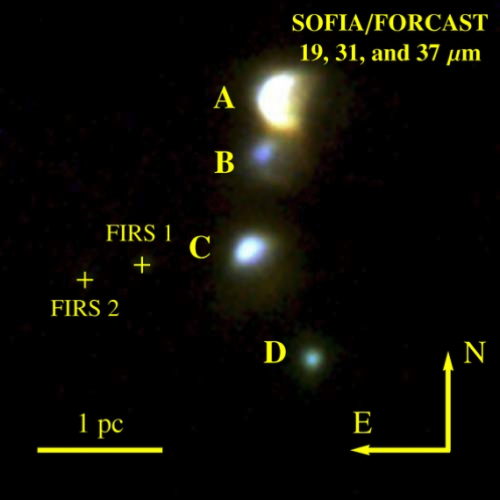
|
|
SOFIA Mission Manager’s Update
Eddie Zavala, NASA SOFIA Program Manager What an exciting time it’s been for the SOFIA Program. As a testament to the professionalism of our aircraft maintainers and our flight, science, and instrument teams, SOFIA has departed on 93 percent of its scheduled flights, which exceeds our stated 2014 goal of 89 percent. During these operations we have achieved more than eight research hours per flight in support of more than 40 Cycle 2 guest investigators. |
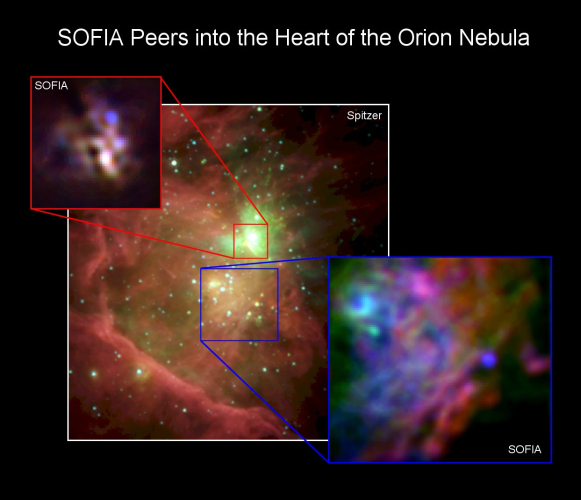
|
|
GREAT Far-IR Spectrometer’s H-channel Offers New Science Opportunities
With successful commissioning of a new “H” (high-frequency) channel, SOFIA’s GREAT (German Receiver for Astronomy at Terahertz Frequencies) far-infrared spectrometer is ready to open new celestial windows for the world’s scientific community. |

|
|
Testing of EXES Mid-IR Spectrograph Begins on SOFIA
Astronomers are eagerly waiting to begin use of a new instrument to study celestial objects: a high-resolution, mid-infrared spectrograph mounted on NASA's Stratospheric Observatory for Infrared Astronomy (SOFIA), the world's largest flying telescope. |
|
|
NASA Declares Airborne Observatory Fully Operational
On June 2, 2014, during the 224th meeting of the American Astronomical Society in Boston, Massachusetts, Paul Hertz, director of NASA's Astrophysics Division, announced that the Stratospheric Observatory for Infrared Astronomy (SOFIA) has passed its Key Decision Point E (KDP-E) and been transitioned into the operational phase. "We have now formally completed the development phase of SOFIA and declared the observatory operational. That's the equivalent of a launch for a space mission," said Hertz. |
|
|
SOFIA's Instrument Suite Gains New Spectrometer, FIFI-LS
The scientific capabilities of NASA’s Stratospheric Observatory for Infrared Astronomy (SOFIA) were increased substantially on April 15, 2014, with completion of commissioning tests and the first scientific observations made by the Field-Imaging Far-Infrared Line Spectrometer, FIFI-LS. |

|
|
EXES Instrument Ready for Observations
On March 31, a team from the University of California at Davis and NASA Ames installed the Echelon-Cross-Echelle Spectrograph (EXES) science instrument on SOFIA. EXES is a mid-infrared spectrograph that collects data at wavelengths between 4.5 to 28.3 microns, a region of the spectrum with many molecular transitions. SOFIA, a joint project involving NASA and the German Space Agency, is a Boeing 747SP aircraft that carries a 2.5-meter telescope to the stratosphere and above 99 percent of the Earth’s atmospheric water vapor for eight to nine hour observing sessions. |
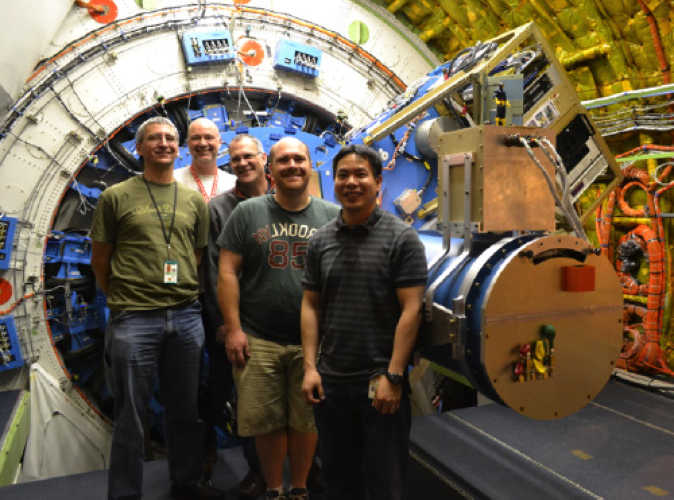
|
|
Commissioning Tests of SOFIA’s FIFI-LS Spectrometer Begin
The FIFI-LS (Field-Imaging Far-Infrared Line Spectrometer) instrument developed by the University of Stuttgart was carried aloft by SOFIA for its “first-light” flight on March 7, and subsequently completed its first series of commissioning flights. Right “out of the box”, the instrument displayed exceptional performance. |
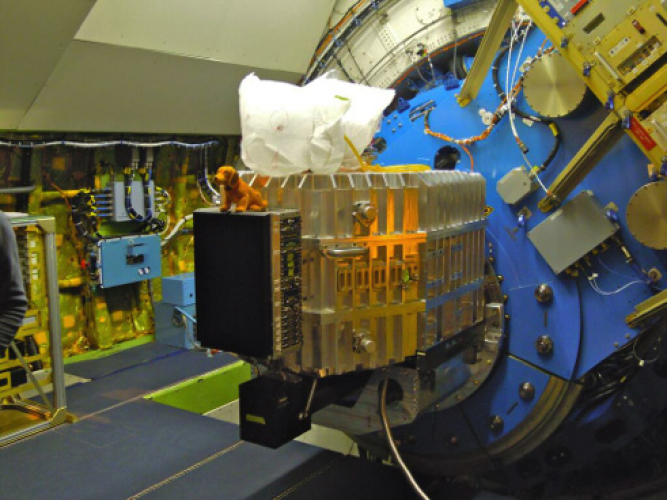
|
|
SOFIA Target of Opportunity: Observing Supernova 2014J
On Feb. 18, 20, 24, and 26, NASA's flying observatory focused on the explosion known as a supernova that obliterated the remains of a star about the mass of the Sun in the Messier 82 galaxy (M82). Located 11 million light years from Earth in the direction of the constellation Ursa Major, the exploding star is named Supernova (SN) 2014J. |

|
|
SOFIA's Allan Meyer Recognized by the University of Stuttgart for Career Contributions to Airborne Astronomy
By Kassandra Bell When rings were first discovered around the planet Uranus, Allan Meyer was there. When water erupted out of Halley’s Comet, Allan Meyer was there, too. He wasn't in space but in the stratosphere, operating the telescope on a NASA airborne observatory. |
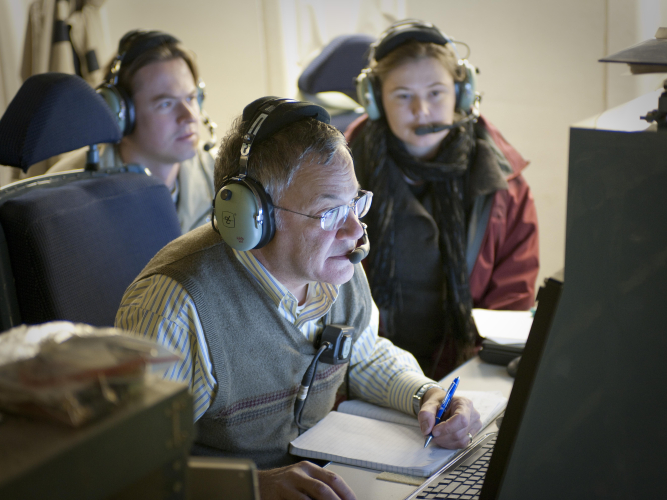
|
|
Nature versus Nurture: Evolution of Massive Stars Near the Galactic Center
Ryan Lau of Cornell University and his collaborators presented a poster paper analyzing SOFIA/FORCAST observations of mass loss from extremely luminous stars near the center of the Milky Way Galaxy during the 223rd meeting of the American Astronomical Society in Washington, DC. |
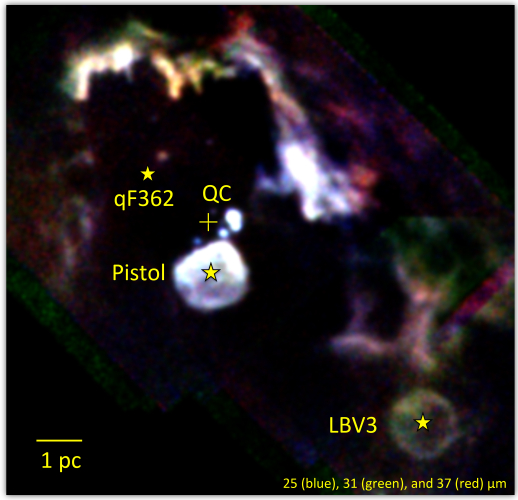
|
|
NASA Observatory Selects Educator Teams for 2014 Science Flights
Release 14-003 NASA's Stratospheric Observatory for Infrared Astronomy, or SOFIA, will become a flying classroom for teachers during research flights in the next few months. |
|
|
Target of Opportunity: Comet ISON
NASA’s Stratospheric Observatory for Infrared Astronomy (SOFIA) took off on a “target of opportunity” flight that included study of Comet ISON on Oct. 24, 2013. This was SOFIA's second opportunity to capture data on a comet, having previously studied Comet Hartley 2 in 2010. For the Comet ISON observations, the object was predicted to be very faint. |
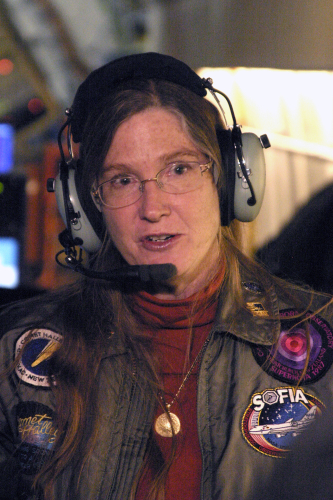
|
|
FIFI-LS on its way to California
The Field-Imaging Far-Infrared Line Spectrometer (FIFI-LS) instrument was shipped from Germany on November 11th, 2013. After the instrument arrived at the Dryden Aircraft Operations Facility, Palmdale, Calif., several months of preparations began for its operation onboard SOFIA. The first science observing flights with FIFI-LS are currently scheduled for March 2014. Being a so-called 3-D spectrometer, FIFI-LS uses SOFIA’s valuable observing time in a quite efficient way by obtaining images and spectroscopic information simultaneously using a rather complicated mirror system (Fig. 2b). |
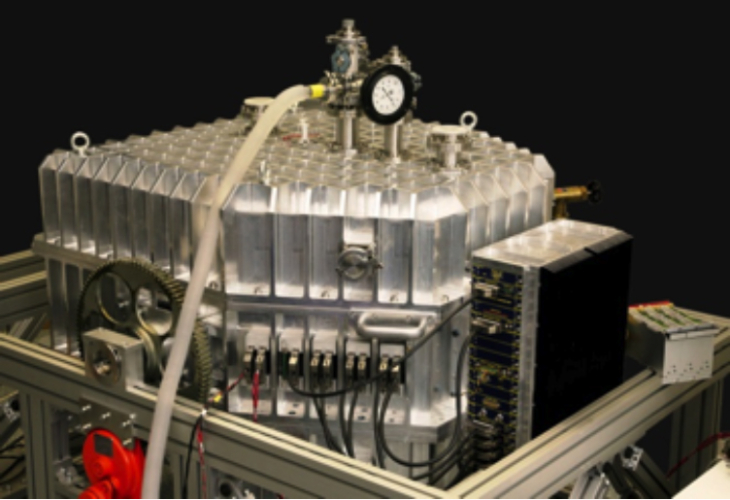
|
|
SOFIA Announces Cycle 2 Observing Program Selections
NASA, the German Aerospace Center (DLR), the SOFIA Science Center, and the German SOFIA Institute (DSI) have announced the selection of 51 investigations to study the universe using the Stratospheric Observatory for Infrared Astronomy (SOFIA). SOFIA, a joint program between NASA and the DLR, is set to begin its second full cycle of science flights from February through December 2014. |
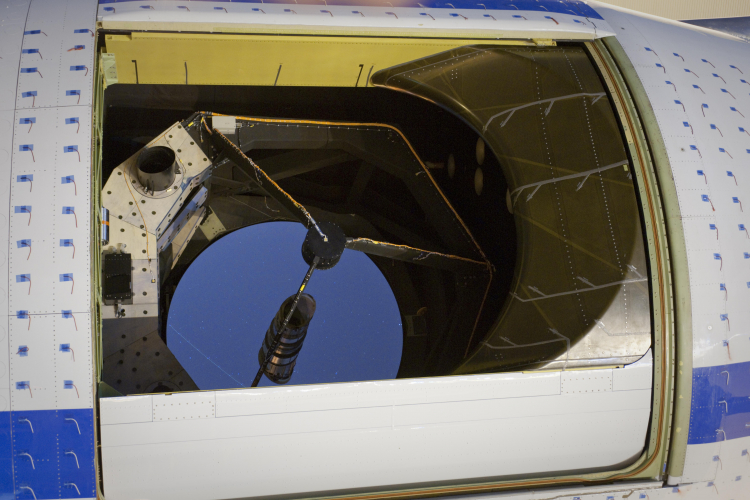
|
|
Reuse, Recycle: SOFIA Obtains Spare Parts from Government Surplus 747s
By Nicholas A. Veronico In today’s climate of ever-shrinking budgets and the demand to do more with less, NASA’s Stratospheric Observatory for Infrared Astronomy (SOFIA) has become the beneficiary of two now-completed aircraft programs – the retirement of the 747 Airborne Laser Test Bed (ALTB) and the 747 Space Shuttle Carrier Aircraft (SCA). Millions of dollars worth of parts used to support those programs have been, or will soon be transferred to NASA to keep SOFIA in the air for many years to come. |

|
|
Gordon Fullerton, SOFIA's First Pilot, Passes Away
Gordon Fullerton, test pilot, shuttle astronaut, and pilot-in-command for SOFIA's first test flight in 2007, passed away August 21 at age 76. SOFIA's Program Manager Eddie Zavala said, "It seemed as though Gordo flew everything and anything that he could. Many of our Dryden team members, myself included, knew Gordo well and had the privilege of working with him on numerous flight research projects." |
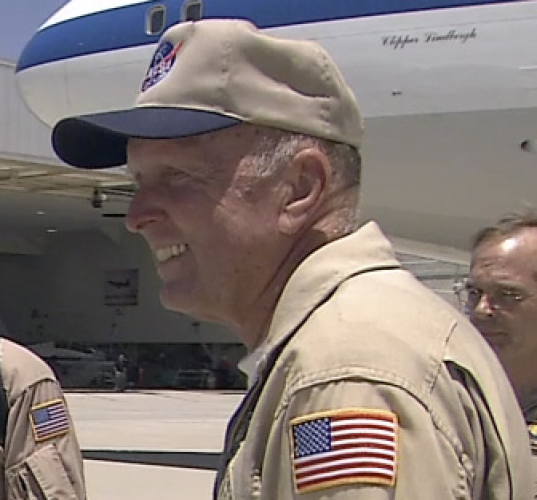
|